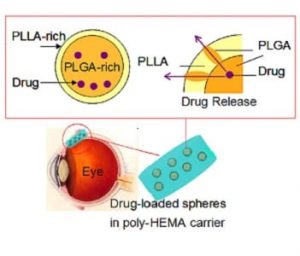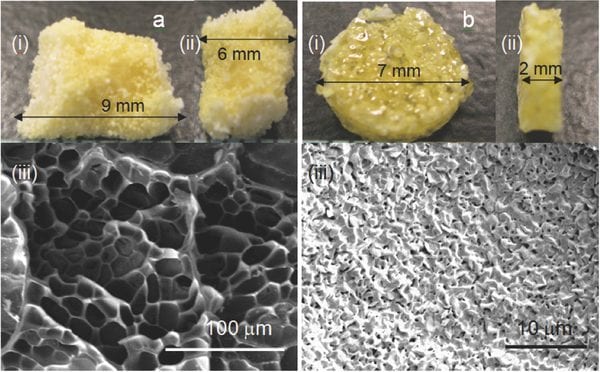Glaucoma is an eye disease in which damage to the optic nerve leads to progressive, irreversible vision loss. It is associated with increased intraocular pressure (IOP) due to the accumulation of aqueous humor in the eye. High IOP levels increase the likelihood of optic nerve damage and loss of visual field.
 Dr. Ying and co-workers have demonstrated the possibility of long-term glaucoma treatment using drug-loaded double-polymer core-shell microspheres embedded in a porous removable carrier. It was shown in rabbits that a single administration of this drug-loaded microspheres/carrier system (M/CS) in the subconjunctival flap was sufficient to elicit an immediate IOP reduction of 20 mmHg, which was sustained for 55 days. In comparison, commercial eye drops administered multiple times a day typically results in an IOP reduction of only 2‒6 mmHg. IOP reduction may be maintained by periodic replacement of this M/CS for an effective means of long-term glaucoma treatment. While articles have previously described implantable ocular inserts, this M/CS delivery system enables significantly greater IOP reduction that is sustainable for a much longer duration. The small size of the M/CS allows easy implantation and removal, minimizing eye trauma and irritation, and no significant increase in inflammation or vascularity in the surrounding tissues has been observed. The drug encapsulation process in the M/CS successfully preserves the efficacy of the drug, enabling a corresponding alleviation of disease symptoms for the duration of the drug release. This novel polymeric M/CS could be used to enable long-term drug delivery to the subconjunctiva for the treatment of a range of ocular disorders.
Dr. Ying and co-workers have demonstrated the possibility of long-term glaucoma treatment using drug-loaded double-polymer core-shell microspheres embedded in a porous removable carrier. It was shown in rabbits that a single administration of this drug-loaded microspheres/carrier system (M/CS) in the subconjunctival flap was sufficient to elicit an immediate IOP reduction of 20 mmHg, which was sustained for 55 days. In comparison, commercial eye drops administered multiple times a day typically results in an IOP reduction of only 2‒6 mmHg. IOP reduction may be maintained by periodic replacement of this M/CS for an effective means of long-term glaucoma treatment. While articles have previously described implantable ocular inserts, this M/CS delivery system enables significantly greater IOP reduction that is sustainable for a much longer duration. The small size of the M/CS allows easy implantation and removal, minimizing eye trauma and irritation, and no significant increase in inflammation or vascularity in the surrounding tissues has been observed. The drug encapsulation process in the M/CS successfully preserves the efficacy of the drug, enabling a corresponding alleviation of disease symptoms for the duration of the drug release. This novel polymeric M/CS could be used to enable long-term drug delivery to the subconjunctiva for the treatment of a range of ocular disorders.

















